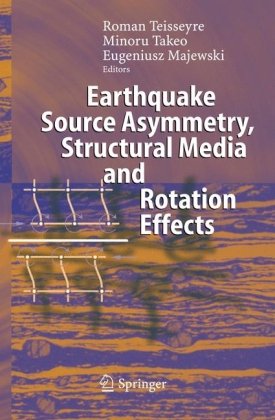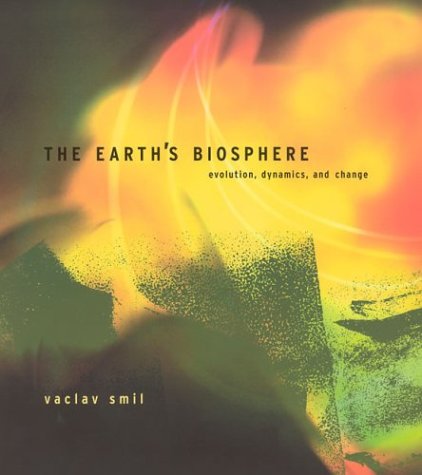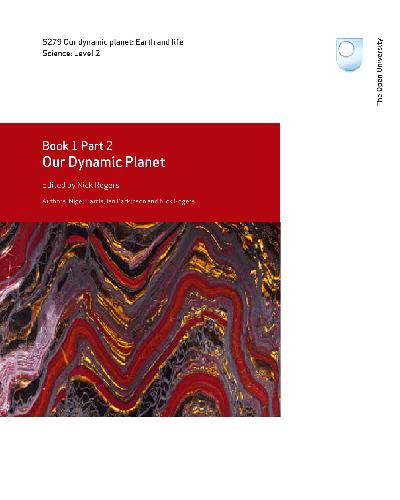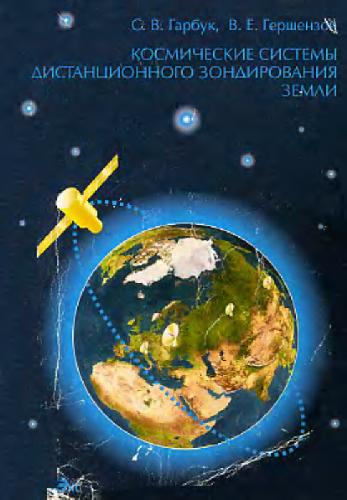Roman Teisseyre, Minoru Takeo, Eugeniusz Majewski3540313362, 9783540313366
Table of contents :
Contents……Page 9
PART I: MACROSEISMIC ROTATION EFFECTS AND MICROMOTIONS……Page 24
1 Development of Earthquake Rotational Effect Study……Page 25
2.1 Introduction……Page 33
2.2 Elements of the Basic Theory……Page 37
2.3 Recording the Rotation and Twist Motions……Page 40
3 Some Examples of Rotation Effects: the Tulbagh Earthquake, South Africa……Page 46
PART II: THEORY OF CONTINUA AND FIELDS OF DEFECTS……Page 50
4.1 Introduction……Page 51
4.2 Symmetric Stresses: Motion Equations……Page 53
4.3 Thermal Deformations……Page 54
4.4 The Maxwell and Voigt–Kelvin Bodies: Equivalence Theorems……Page 55
4.5 Asymmetric Fields……Page 56
5.1 Introduction……Page 62
5.2 Transition to Symmetric Tensor of Potentials……Page 68
5.3 Special Case……Page 71
5.4 Conclusions……Page 72
6.1 Introduction……Page 75
6.2 Defect Density Fields……Page 78
6.3 Dislocation–Stress Relations……Page 81
6.4 Equations of Motion……Page 82
6.5 Discussion……Page 83
7.1 Introduction……Page 85
7.2 Towards a Discrete Description……Page 87
7.3 Discrete Weingarten Theorem……Page 89
7.4 Prospects……Page 92
Appendix: Discrete Integration by Parts……Page 93
8.1 Introduction……Page 95
8.3 Evolution Equations for Dislocations and Disclinations……Page 96
8.4 Motion Equations: Fault and Radiation Parts……Page 97
8.5 Discussion……Page 106
9.1 Introduction……Page 108
9.2 Stick-Slip Friction of a Granular System. Hysteresis and Precursors……Page 110
9.3 Rock Friction……Page 114
9.4 Laboratory Experiments at High Rates of Slip. The Energy Budget for Tectonic Faulting……Page 119
9.5 Modern Views on Friction. Theoretical Studies……Page 121
9.6 Constitutive Friction Law for the Antisymmetric Stresses……Page 124
9.7 Open Questions……Page 125
10.1 Introduction……Page 129
10.3 The Korteweg–de Vries Equation……Page 131
10.5 The Kadomtsev–Petviashvili Equation……Page 133
10.6 The Boussinesq Equations……Page 134
10.8 The Nonlinear Schrödinger Equation……Page 135
10.9 The Nonlinear Klein–Gordon Equation……Page 136
10.11 The Inverse Scattering Transform……Page 137
10.12 Rotating Solitons……Page 138
10.13 Discrete Soliton Systems……Page 140
10.14 Conclusions……Page 142
PART III: ROTATION MOTIONS, SEISMIC SOURCE MODELS, AND ASYMMETRY OF FRACTURE……Page 145
11.1 Introduction……Page 146
11.2 Geometrical Theory of Defects……Page 147
11.3 Formulation of Rotational and Translational Motions Due to Earthquakes……Page 160
11.4 Possibility of Estimating a Rotational Strain Tensor Due to an Earthquake……Page 164
11.5 Conclusions……Page 169
12.1 Introduction……Page 172
12.3 Near-Source Ground Rotational Motions……Page 173
12.4 Discussion……Page 176
13.2 Earthquake Dislocation Theory……Page 183
13.3 Earthquake Thermodynamics and Fracture Band Model……Page 185
13.4 Elastic Rotation Energy……Page 187
13.5 Cross-Band Fracturing Model and Rotation Processes……Page 189
13.6 Conclusions……Page 196
14.1 Introduction……Page 198
14.2 Examples of Records and Their Preliminary Analysis……Page 199
14.3 Discussion……Page 209
15.2 Icequakes……Page 211
15.3 Ice Vibrations……Page 213
15.4 Discussion……Page 226
16.2 Modelling the Rotational Motions Excited in Earthquake Sources as Rolling Motions……Page 228
16.3 Rolling in the Earthquake Source as Translation and Rotation Combined……Page 229
16.4 The Kinetic Energy of Rolling in the Earthquake Source……Page 230
16.5 Modelling Purely Rotational Motions in the Earthquake Source……Page 232
16.6 The Torque and Angular Momentum of the Earthquake Source……Page 233
16.7 Modelling Rotational Motions in the Earthquake Source as a Turbulence of Grains and Blocks Between Moving Tectonic Plates……Page 234
16.8 Conclusions……Page 236
17.1 Introduction……Page 237
17.2 Experimental Data……Page 239
17.3 Field Observations……Page 246
17.4 Conclusions……Page 248
18.1 Introduction……Page 251
18.2 Observational Evidence……Page 252
18.3 Mathematical Model of Deformation Process……Page 253
18.4 Solitary Wave of Fault Activation……Page 255
18.5 Evolution of Waves of Fault Activation……Page 256
18.6 Effect of Periodical Change of Friction in the Fault……Page 257
18.7 Effect of Periodical Change of External Load……Page 258
18.8 Conclusions……Page 261
19.1 Introduction……Page 264
19.2 Modelling the Rotational Motions Excited in Earthquake Sources……Page 265
19.3 Seismic Rotation Waves: PR and SR Waves……Page 266
19.4 The Slow Tectonic Rotation Waves……Page 267
19.6 A Rock Medium Modelled as a Nonlinear Micropolar Elastic Continuum……Page 268
19.8 The Linear Seismic Rotation Waves……Page 270
19.9 The Nonlinear Seismic Rotation Waves……Page 272
19.10 Dispersion Curves and Rotation Solitons……Page 275
19.11 The Seismic Rotation Solitons in the Degenerated Continuum……Page 276
19.12 Conclusions……Page 279
20.1 Introduction……Page 282
20.2 Hypothesis……Page 283
20.3 Stress Field Related to Rotation of Hard Bodies……Page 284
20.4 Interaction Between Seismofocal Blocks……Page 288
20.5 Chain of Blocks: Application to Pacific Margin Seismic Belt……Page 289
20.6 Friction and Irregularities of Block Rotation: Rotation Mechanics of Earthquake Foci……Page 291
20.7 Some Consequences……Page 293
20.8 Conclusions……Page 295
PART IV: EFFECTS RELATED TO MEDIUM STRUCTURES AND COMPLEXITY OF WAVE PROPAGATION……Page 299
21.1 Introduction……Page 300
21.3 The Macroscopic and Microscopic Balance Equations……Page 301
21.4 The Nonlinear Microstructure……Page 305
21.5 Conclusions……Page 306
22.2 Seismic Waves in the Continuum with Dislocations……Page 308
22.3 Seismic P waves……Page 311
22.4 Splitting the Elastic Distortion Soliton Equation into Seismic and Fault-Related Soliton Equations……Page 312
22.5 Seismic S Waves……Page 313
22.6 Conclusions……Page 315
23.2 Preliminary Assumptions……Page 317
23.3 Seismic Rotation Solitons……Page 318
23.4 Conclusions……Page 320
24.1 Introduction……Page 322
24.2 Micromorphic Continuum with Defects……Page 323
24.3 Taylor–Bishop–Hill Model……Page 325
24.4 Quartz c-axis Preferred Orientation in Quartz Schist……Page 326
24.5 Seismic Anisotropy due to LPO in Deformed Rocks……Page 328
24.6 Discussion……Page 329
24.7 Conclusion……Page 331
25.1 Introduction……Page 334
25.2 Finsler Geometry and Seismic Ray……Page 335
25.3 Seismic Finsler Metric and Kawaguchi Space……Page 336
25.4 Discussion……Page 338
26.1 Introduction……Page 342
26.2 High-Order Spaces and Non-Locality of Deformation……Page 343
26.3 An Interaction Field Between Microscopic and Macroscopic Deformation Fields……Page 344
26.4 Asymmetry and Anholonomity of Deformation……Page 346
26.5 Discussion……Page 347
27.1 Introduction……Page 352
27.2 Seismology: a Science in Trouble?……Page 353
27.3 Disasters in General, and Mexico City in Particular……Page 354
27.4 A Higher Level of Description……Page 356
27.5 Nonlinearity and Non-Equilibrium Thermodynamics……Page 359
27.6 A Theory of Disasters as Unexpected Events……Page 363
27.7 Disasters and Society……Page 366
PART V: SEISMIC ROTATIONAL MOTIONS: RECORDING TECHNIQUES AND DATA ANALYSIS……Page 370
28.1 Introduction……Page 371
28.2 Electrical Seismograph with Sliding Smoked Paper……Page 375
28.3 Electrical Seismograph with Sliding Smoked Paper – Second Model……Page 378
29.1 Introduction……Page 381
29.2 Properties of Ring Lasers……Page 383
29.3 Detection of Seismic Signals……Page 389
29.4 GEOsensor……Page 391
30.1 Introduction……Page 395
30.2 Fundamental Theory……Page 398
30.3 Rotational Measurements……Page 403
30.4 Observations and Simulations of Rotational Motions……Page 405
30.5 Discussion and Conclusions……Page 411
31.2 Sagnac Effect……Page 416
31.3 Optical Gyroscopes as Systems Utilizing the Sagnac Effect……Page 419
31.4 Fundamental Measurement Limits……Page 422
31.5 Fiber-Optic Rotational Seismometer (FORS)……Page 423
31.6 Investigation of the SRE Propagation Velocity……Page 436
31.7 Conclusions……Page 438
32.1 Introduction……Page 442
32.2 Design of the Rotation Seismometer……Page 443
32.3 Absolute Rotation Component Amplitudes for Earthquakes Observed at Sites of Different Surface Geological Conditions……Page 447
32.4 Results and Future Scope……Page 452
33.1 Introduction……Page 454
33.2 Behaviour of a Pendulum Seismometer During Measurement of Rotations – Static Approach……Page 455
33.3 Measurement of Rotations by a Pair of Seismometers – Influence of Seismic Waves on Signal……Page 457
33.4 Influence of Small Differences in Channel Responses on Rotation Measurement – Dynamic Approach……Page 463
33.5 The Pendulum Seismometer for Measurement of Rotations Alone……Page 468
33.6 Conclusions……Page 472
34.1 Introduction……Page 474
34.2 Theory of the Pendulum……Page 476
34.3 Residual Displacements and what can be Done in Absence of Recorded Rotations (Tilts)……Page 479
34.4 Numerical Tests of the Effects of Tilt on Computations of Displacement……Page 482
34.5 Conclusions……Page 485
35.2 Experimental Setup……Page 489
35.3 Experimental Records……Page 491
35.4 Conclusions……Page 493
36.1 Introduction……Page 495
36.2 Natural Conditions in the Low Silesian Geophysical Observatory……Page 496
36.3 Principle of Operation of the Long Water-Tube Tiltmeter……Page 497
36.5 The Optic Module of Interference Gauge of the Water Level Variations Measurements……Page 500
36.6 Determination of the Function of Plumb Line Variations……Page 506
36.7 Determination of tidal wave coefficients on the basis of the long water-tube measurements……Page 514
36.8 Observations of anomalous plumb line variations associated with Earth free oscillations on 26 December 2004……Page 515
36.9 Conclusions……Page 518
37.2 Seismic Monitoring……Page 523
37.4 Fiber Optic Sensing……Page 525
37.5 Matched Filtering/Antenna Gain……Page 533
37.6 Physical Simulation Results Using STM……Page 540
37.7 Discussion and Summary……Page 544
PART VI: ROTATIONS AND ENGINEERING SEISMOLOGY……Page 548
38.1 Introduction and Formulation of the Problem……Page 549
38.2 Spectral Decomposition of Translational Components of Seismic Ground Motion……Page 552
38.3 Rocking from Body Waves Decomposition……Page 553
38.4 Rocking from Surface Waves……Page 559
38.5 Rocking from Spatial Field of Ground Motion……Page 560
38.6 Code Proposals and Approximate Formulae……Page 563
38.7 Application Example: A Slender Tower Under Horizontal-Rocking Excitations……Page 564
38.8 Summary and Conclusions……Page 566
39.1 Introduction……Page 569
39.2 Rotational Strong Ground Motion……Page 571
39.3 Recording Rotational Strong Motion……Page 572
39.4 Generation of Synthetic Rotational Motions……Page 573
39.5 Response of Structures……Page 576







Reviews
There are no reviews yet.